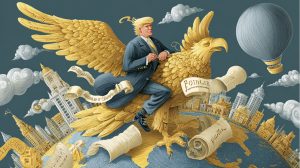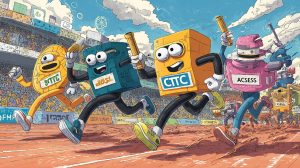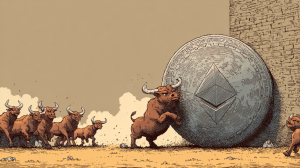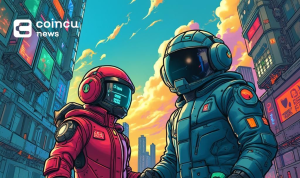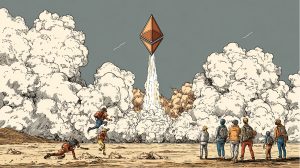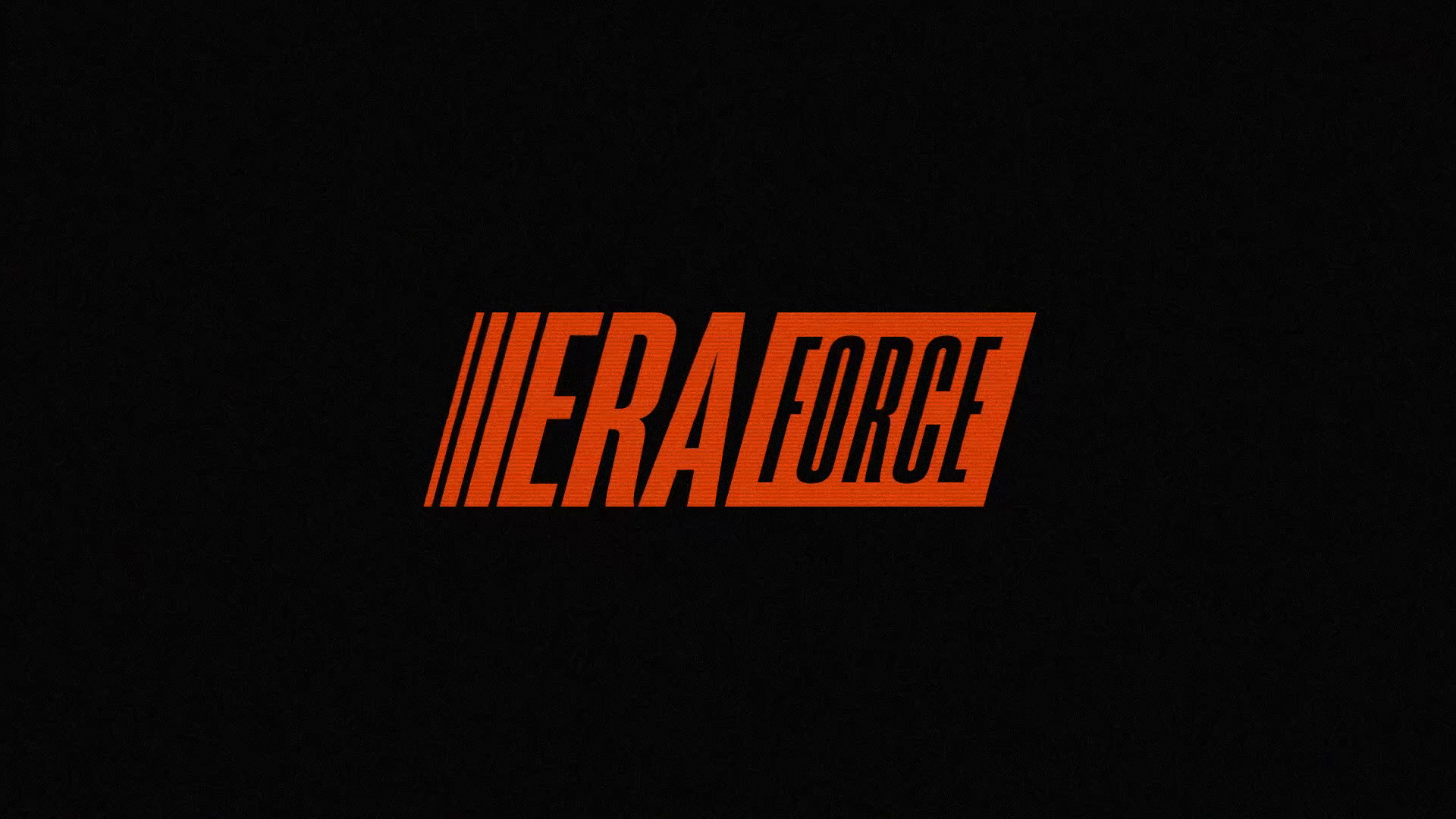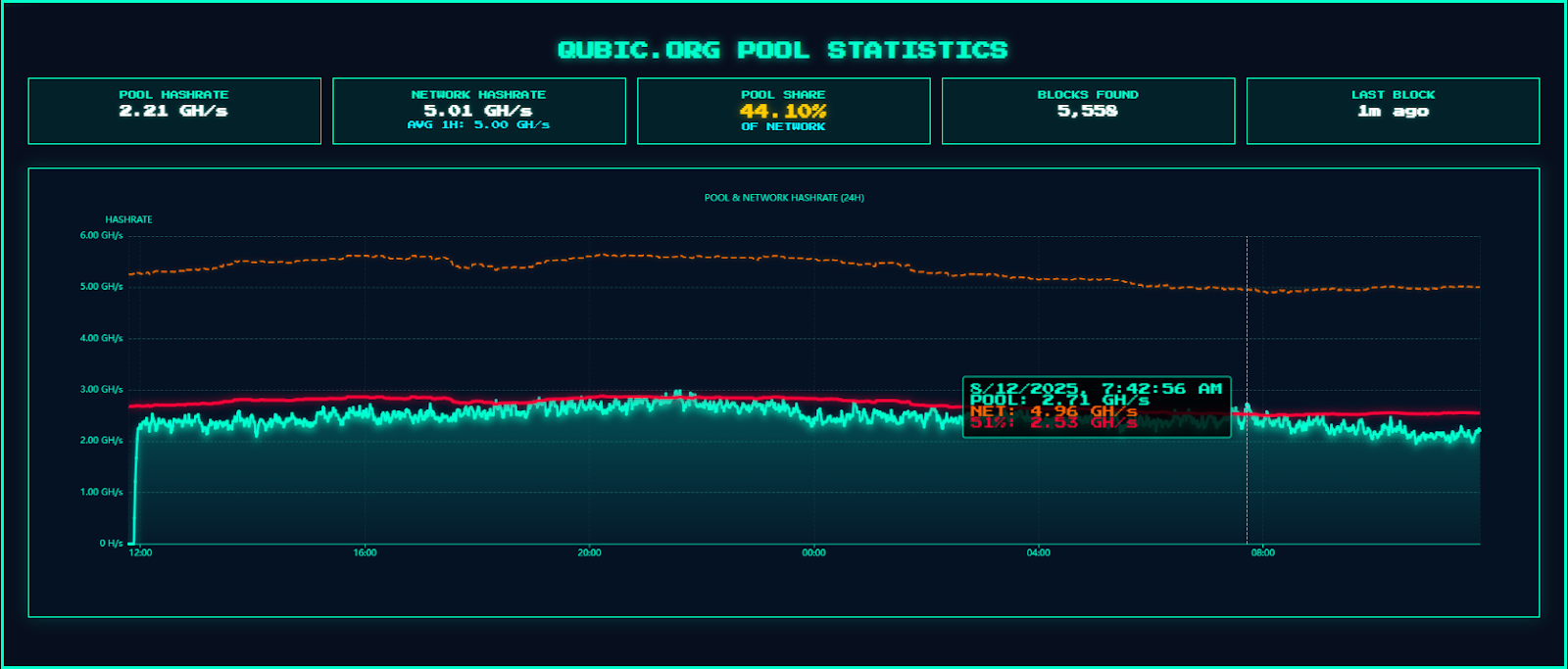Inventory Of The Web3 Project On The AI Track: How To Combine These Two Top Technologies?
OpenAI’s chatbot ChatGPT reached 100 million monthly active users just two months after its launch, making it the fastest-growing app in history. Such a powerful ability to “increase fans” quickly spread the popularity of AI to the encryption field. On January 10, Bloomberg reported that Microsoft was considering investing $10 billion in OpenAI, the developer of ChatGPT. All AI-concept cryptocurrencies were completely detonated. What about Web3, a key technology of the crypto world?
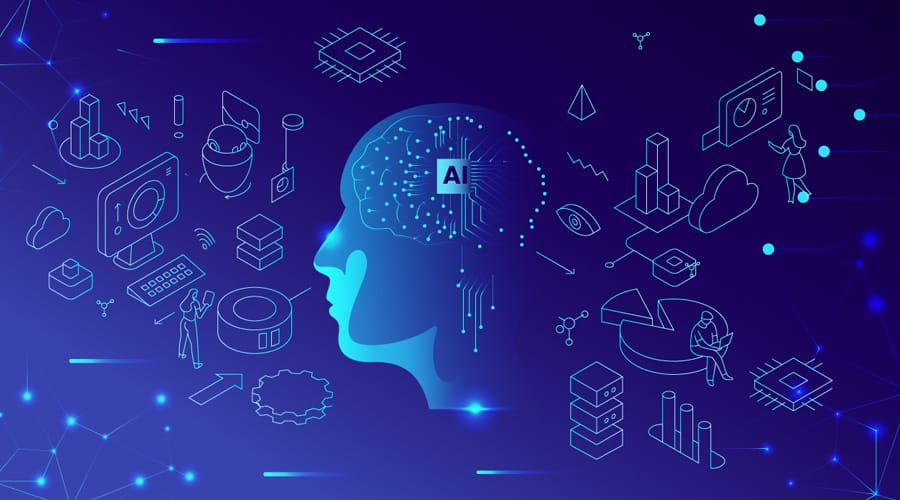
With the help of capital, can these two high-profile, cutting-edge technologies be integrated? Artificial intelligence uses computers to solve problems by mimicking the thinking abilities of the human brain. OpenAI feeds natural language processing (NLP) models with massive amounts of training data to make them more powerful. In the encrypted world built by blockchain technology, the huge data on the chain every day can provide “fuel” for the AI engine, allowing AIGC to feedback better strategies.
Plus, as AI algorithms get smarter, it becomes harder for humans to understand how they reach their decisions and conclusions. The immutable nature of the blockchain can help us access an immutable record of the data and processes that AI uses in its decision-making process.
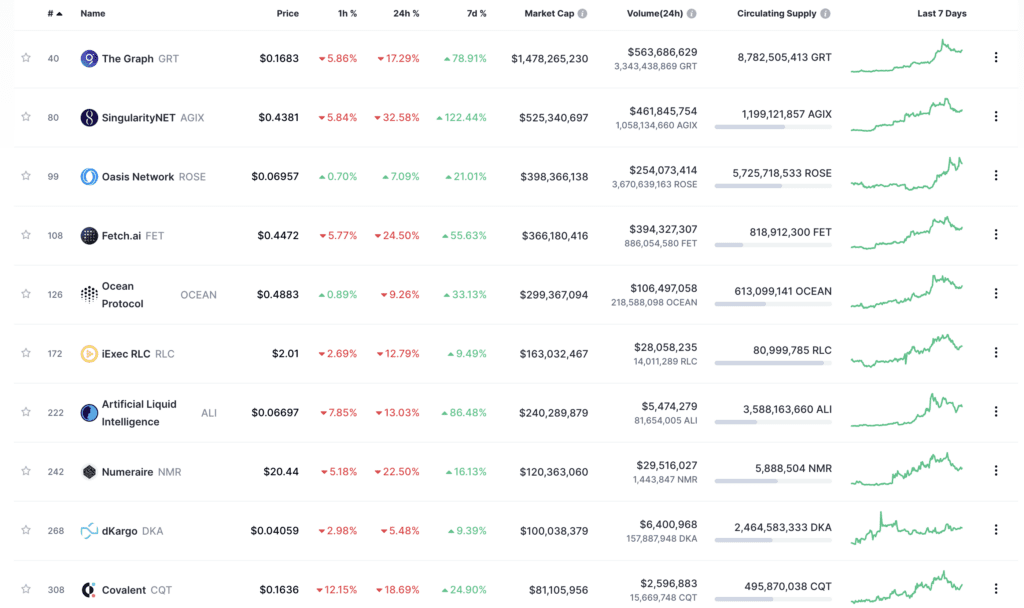
Compared with Stability AI, ChatGPT and other artificial intelligence that has gained a lot of attention and adoption in traditional fields, the greater imagination of blockchain lies in the economic system that can change the AI model. After the FOMO sentiment fades, this article will explore the characteristics of those encryption projects that introduce AI technology. What kind of chemical reaction can AI combine with blockchain produce?
AI infrastructure
The common feature of AI infrastructure projects is the distribution and sale of traditional AI architectures (data, models, and computing power). They generally use their own native tokens as a medium of exchange. They are often in an intermediary position between users and service providers, building a decentralized trading market. These are all tasks that need to be completed by traditional AI, such as NLP, AI voice, and CV fields that use DApp as an intermediary platform for transactions. In essence, it is a decentralized market that uses token pricing and exchange in the traditional market.
Openfabric AI
Openfabric is a platform for building and connecting AI applications. Through the platform, collaboration among AI innovators, data providers, enterprises and infrastructure providers will facilitate the creation and use of new intelligent algorithms and services. The Openfabric ecosystem consists of 4 roles: algorithm creators, data providers, infrastructure providers, and service consumers, among which service consumers need to pay the other 3 types of service providers.
- Algorithm creators: Leverage their expertise to create AI algorithms that solve complex business problems.
- Data Providers: Ensure the distribution of large volumes of data needed to train AI algorithms.
- Infrastructure Provider: All the hardware that runs the AI platform.
- Service Consumer: An end user who requires a specific business product or service.

Oraichain
Oraichain is an AI-driven blockchain oracle and ecosystem. In addition to data oracles, Oraichain’s goal is to become a complete artificial intelligence ecosystem in the blockchain field as the base layer for creating smart contracts and Dapps. With AI as the cornerstone, Oraichain has developed many important innovative products and services, including AI price feed, fully on-chain VRF, Data Hub, AI Marketplace with more than 100 AI APIs, AI-based NFT generation and NFT copyright protection, Royalty Protocol, an AI-driven yield aggregator platform and Cosmwasm IDE.
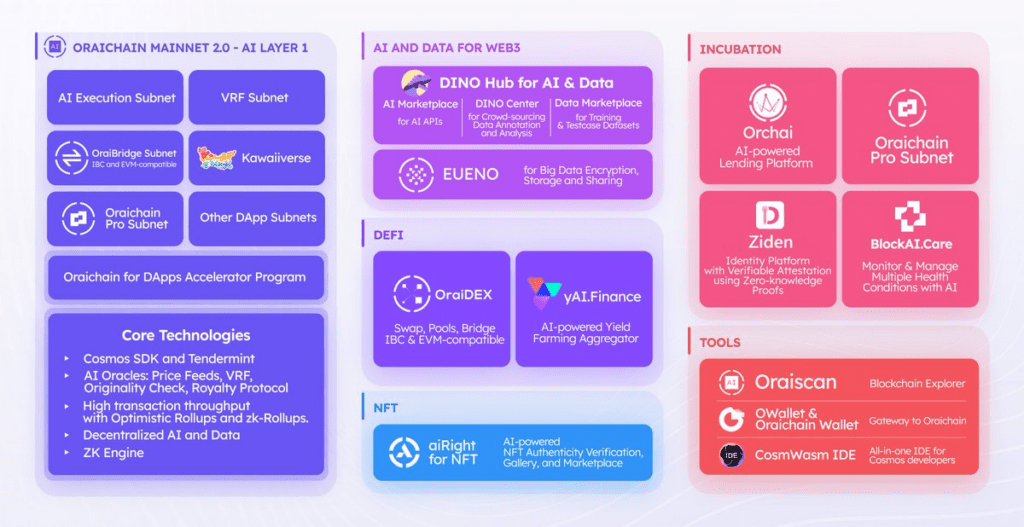
Fetch.ai
Fetch.ai is an artificial intelligence and machine learning-based blockchain platform that enables anyone to share or trade data. As an autonomous machine-to-machine ecosystem, any network of independent parties can become a network agent for Fetch.ai, recording any agreement between agents on the Fetch.ai blockchain. FET is the native token of the Fetch AI blockchain and is the primary medium of exchange for payment transactions.

SingularityNET
SingularityNET is a decentralized artificial intelligence platform and marketplace. Developers publish their services to the SingularityNET network, making them available to anyone with Internet access. Developers can use native AGIX tokens to charge for their services. Services can provide reasoning or model training across domains, such as image, video, speech, text, time series, artificial biological intelligence, and network analysis.
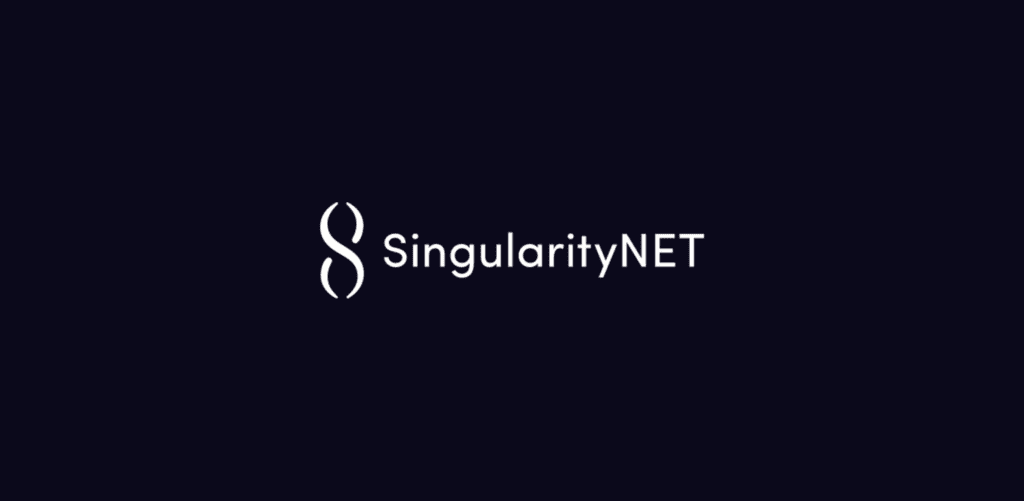
The SingularityNET ecosystem will provide AI services to the platform and create mass utilization of AGIX tokens. These SingularityNET spinoffs are being developed across several strategically selected verticals, including DeFi, Robotics, Biotech & Longevity, Gaming & Media, Arts & Entertainment (Music), and Enterprise-grade AI.
Gensyn
The Gensyn Protocol is a Layer1 network for deep learning computing, with instant rewards for supply-side participants who commit computing time to the network and perform ML (machine learning) tasks. The protocol does not require administrative oversight or enforcement, but instead facilitates task assignment and payment programmatically through smart contracts.
The fundamental challenge of this network is to validate the done ML work. This is a problem at the intersection of complexity theory, game theory, cryptography, and optimization. The Gensyn ecosystem consists of 4 roles: Committer, Resolver, Validator, and Reporter.
- Submitters: Provide tasks to be computed and pay for completed units of work.
- Solvers: Perform model training and generate proofs for verification by verifiers.
- Verifiers: Keys to linking non-deterministic training procedures to deterministic linear computations, replicating parts of solver proofs and comparing distances to expected thresholds.
- Whistleblowers: Check the work of validators and pose challenges in hopes of winning jackpots.
Gensyn’s vision is to reduce Dapps’ dependence on Web2 infrastructure by decentralizing ML computation to provide important infrastructure components for Web3 applications.
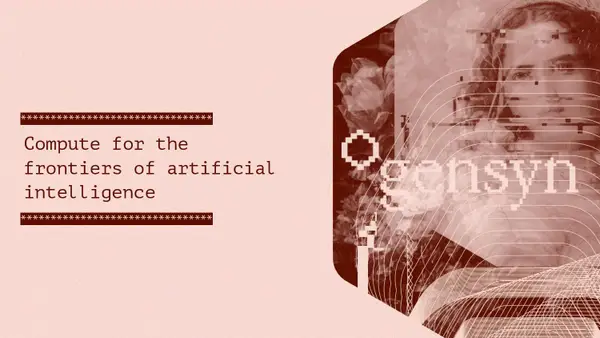
Application scenario
In such application scenarios, the project aims to deal with the emerging needs arising from the development of blockchain in recent years in the form of AI.
These requirements can be to enable chain game users to skip tedious operations, enable developers to quickly develop chain games, socialize on the blockchain platform, generate avatars with their own personalities, detect fake NFT projects, etc. Different from traditional AI platforms, such projects have strong irreplaceable demand, which makes them have a deep moat. At the same time, the development difficulty of a platform that uses emerging demand as a selling point lies in acquiring customers. How to attract enough It has become a major problem in the development of such platforms to prove that the needs of their platforms are sustainable and objective.
Chain tour direction
Under the mainstream financial system of the encrypted game “P2E” model, users are faced with constantly changing gameplay and a large number of repetitive basic operations. AI can provide players with a stable automated process and formulate game strategies with a higher winning rate.
rct AI is a use of AI to provide a complete solution for the game industry, its core technology Chaos Box, is an AI engine based on deep reinforcement learning. rct AI has developed an AI-trained DRL (Deep Reinforcement Learning) model for Axie Infinity.
Since there are about 10^23 combinations of all cards in Axie Infinity, as well as the characteristics of games such as games, the model of rct AI is simulating a large number of Increased efficiency and win rate in battle statistics.
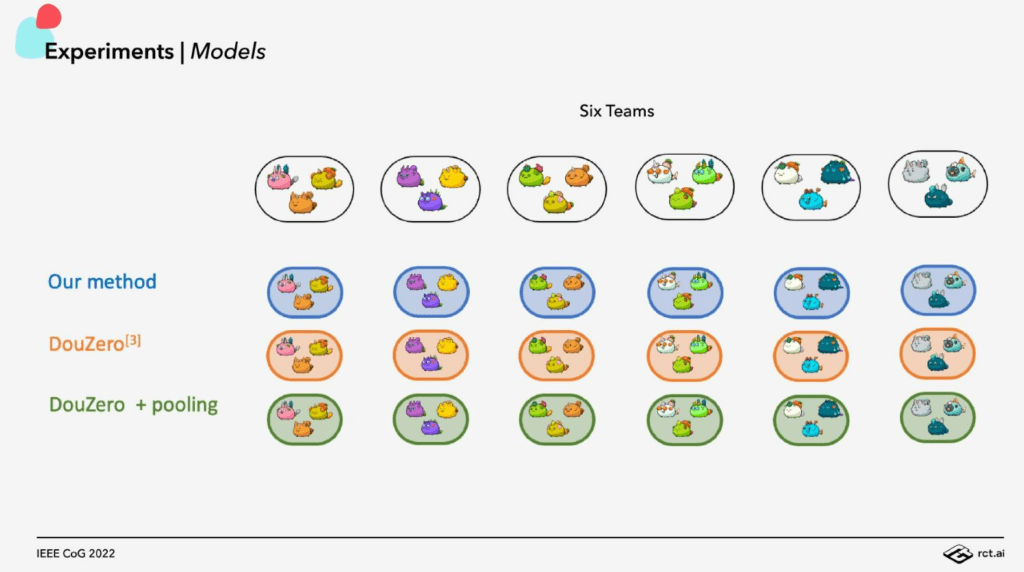
In addition, AI can provide developers with action prototypes. Mirror World is a game matrix virtual world based on Solana. AI technology has been used to launch Mirrama combined with Roguelike gameplay and Brawl of Mirrors, a PVP-based arena game. In addition, Mirror World has also launched a series of NFTs that can be interoperated in the game. The prototypes of these NFTs are completed using AI motion algorithms.
Social direction
PLAI Labs focuses on using AI and Web3 to build a next-generation social platform for users to play, talk, fight, trade and adventure together. The platform received $32 million in financing from a16z in January 2023. Currently, PLAI Labs has shown 2 products to the outside world:
Champions Ascension, a massively multiplayer online role-playing game (MMORPG), players can choose to own their own characters in the form of NFT, and can fight in the large Colosseum arena, do quests, and play in custom dungeons Build and compete and trade digital items in .
An AI protocol platform that will help handle everything from user-generated content (UGC) to matching to 2D to 3D asset rendering.
PLAI Labs plans to launch the V2 white paper this year, including details of the core economic cycle (using NFT and blockchain to enhance experience), UGC toolkit (including AI) plans…
NFT direction
Alethea AI proposes the concept of iNFT, which is a technology that combines artificial intelligence and blockchain. After incorporating AI, NFT has various personality characteristics of interactivity, generativeness, scalability and uniqueness.
To put it simply, if an NFT is a digital human work, after incorporating AI, it becomes an iNFT, an NFT work with the ability to chat with users. On June 10, 2021, the world’s first iNFT Alice was auctioned at Sotheby’s for $478,800.
Altered State Machine (ASM) is an innovative project that combines NFT, artificial intelligence and machine learning to provide training power for AI-driven NFT. Its vision is to become the ownership and monetization protocol for AI using NFT technology. In the ASM ecosystem, the AI-based Avatar is called an Agent, which consists of two parts: the brain and the avatar. The project also issued ASTO tokens to power the ASM ecosystem.
Optic is building an artificial intelligence NFT verification protocol, focusing on NFT fraud analysis and NFT value discovery within the community, aiming to help the entire NFT market achieve higher authenticity and transparency. The Optic intelligent engine retrieves the collection of NFTs in the market by learning the real NFT series. Optic then returns a match score indicating how well the checked NFT matches the real NFT.
Optic completed an $11 million round of financing led by Pantera Capital and Kleiner Perkins in July 2022, with participation from Circle Ventures and Polygon Ventures. Currently OpenSea has adopted Optic’s Copymint detection service.
Trend analysis
Judging from the current development path of blockchain AI projects, the infrastructure of AI is composed of three parts: data, algorithms, and computing power. If a normal AI project wants to realize the ability of artificial intelligence generation or analysis, it needs a model and data set, as well as a software ontology and its GUI for calling the model. Then the distribution of models and data sets in this field, the training of models (computing power leasing), and the development of software front-ends have intermediaries, which will give birth to blockchain AI projects aimed at efficiently meeting customer needs.
For example, above, Fetch.ai acts as an intermediary, allowing customers to use its native token transaction data set. SingularityNET allows customers to purchase computing power training services from developers. Openfabric AI customers need to obtain models (algorithms), data sets, infrastructure (software) and other services from providers. Humans.ai is essentially encapsulated in NFT The AI model trained by the data set is purchased by the user with native tokens,
Gensyn is essentially a decentralized computing power rental platform. These are all tasks that need to be completed by traditional AI, such as natural language processing, AI voice, and image generation projects that use DApp as an intermediary platform for transactions.
Then the decentralized applications in the blockchain have created new demands, and the AI projects based on the chain game direction, social direction and NFT direction aim to solve the user pain points in the blockchain, such as rct.ai to solve the chain game users For the problem of manual repetitive operations, Mirror World solves the development of chain games, and other projects are developed for blockchain social and NFT.
At present, in the initial stage of Web3 social networking, the introduction of AI is more of a narrative method. In the future, some possible directions for AI project research and development:
- Enhance data privacy: Web3 can maximize data privacy protection by using zk technology, and AI can analyze data without compromising privacy.
- Smart contract: Web3 technology can integrate AI applications into Web3 applications through smart contracts, so as to realize the controllability of AI models. This type of application can be used in the transaction of models and datasets to automate the transaction process and use ZK technology to protect user data. However, this type of project faces the impact of open source datasets and open source models. Just imagine: If users can obtain open source data and models on Hugging face and use auto train training, why would they trade on the blockchain platform? Facing the impact of Web2 companies, Web3 AI model and data set transactions do not have enough moats.
- More efficient machine learning: Web3 technology can improve the efficiency of machine learning in a decentralized way, making AI applications faster and more reliable. This has been applied in traditional AI training.
For example, KataGo, an improved version of AlphaGo, uses distributed training technology, so that people around the world who want to update this AI voluntarily provide computing power training. The application in the blockchain can be similar For Gitcoin, POAP can be obtained by donating computing power, or similar to AMM, which provides incentives for liquidity and becomes a platform for renting out computing power for a fee.
However, due to the high volatility of currency prices, such applications are more expensive than traditional GPU computing power. Leasing does not have an advantage.
Unless the platform itself is engaged in financial business, it is enough to subsidize users from the value captured by the agreement, such as Numerai, using AI technology to make profits from the stock market, which makes enough users willing to provide the three elements of AI to enter the platform.
Conclusion
At present, whether it is the native AI infrastructure of the blockchain, or the encryption project that uses the AI engine to realize the application scenario, it is in its infancy. The main goal is to create an applicable underlying infrastructure and integrate token economics and hardware providers. , data providers, AI algorithms and other artificial intelligence solutions.
However, the integration of the two also faces many challenges. First of all, blockchain tends to be complex technologies such as Rollup and ZK, which will bring challenges for AI to obtain data. Secondly, there is not enough continuous experimental data to support the applicability of AI in the blockchain ecosystem and the ability of the AI engine to adjust to emergencies. Finally, the frequent occurrence of false projects in the encryption field that rubbish the concept of AI makes it easy for people to lose confidence in the exploration of this field.
All blockchain AI projects that solve traditional AI problems need to answer a question: why does this platform need to introduce tokens on the blockchain? This makes the trading targets existing targets in the Web2 market, such as models, data and computing power platforms, have the disadvantage of onboarding.
Token economics is like a flywheel that can change the cycle of a project’s rise and fall. At the moment, if you want to move forward, you need to consider the actual users of the platform, that is, the problem of customer acquisition. The irreplaceability of demand is the moat of a project. Projects lacking a moat can achieve short-term success, but there will not be enough Users and a robust developer ecosystem. When demand is a false proposition, economic incentives are unsustainable, and the life cycle of the project will be shortened. We look forward to the emergence of more AI+Web3 projects based on real users and irreplaceable needs. They are designed to fulfill the requirements that are not or poorly completed in Web2, so that they need to be introduced into Web3 natively.
In any case, the integration of AI into Web3 is a future technological trend, and some examples of Web3 applications combined with artificial intelligence have already appeared at this stage. As time goes by, more related Web3 infrastructure and new models will emerge one after another.
DISCLAIMER: The Information on this website is provided as general market commentary and does not constitute investment advice. We encourage you to do your own research before investing.
Join us to keep track of news: https://linktr.ee/coincu
Harold
Coincu News








